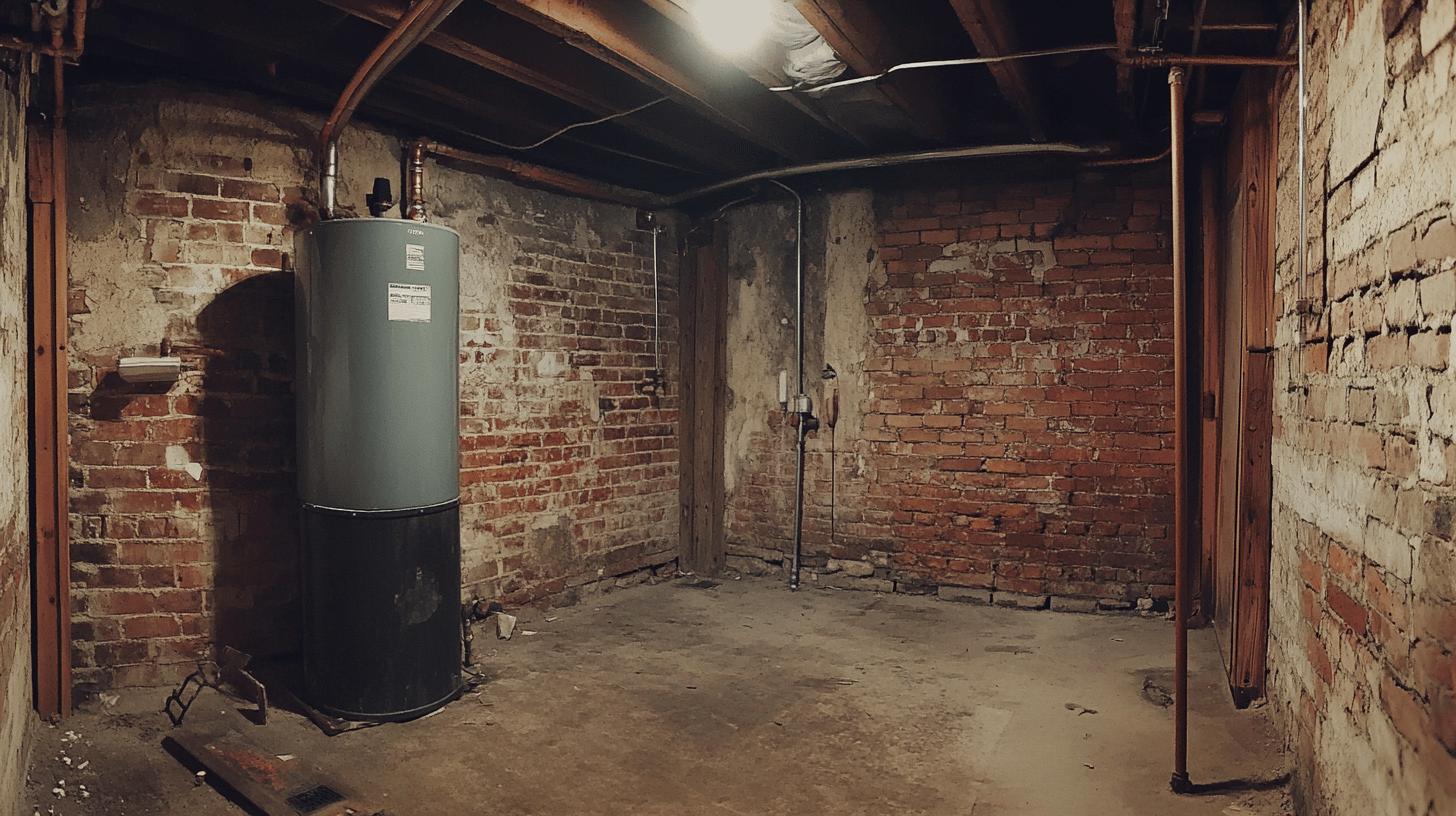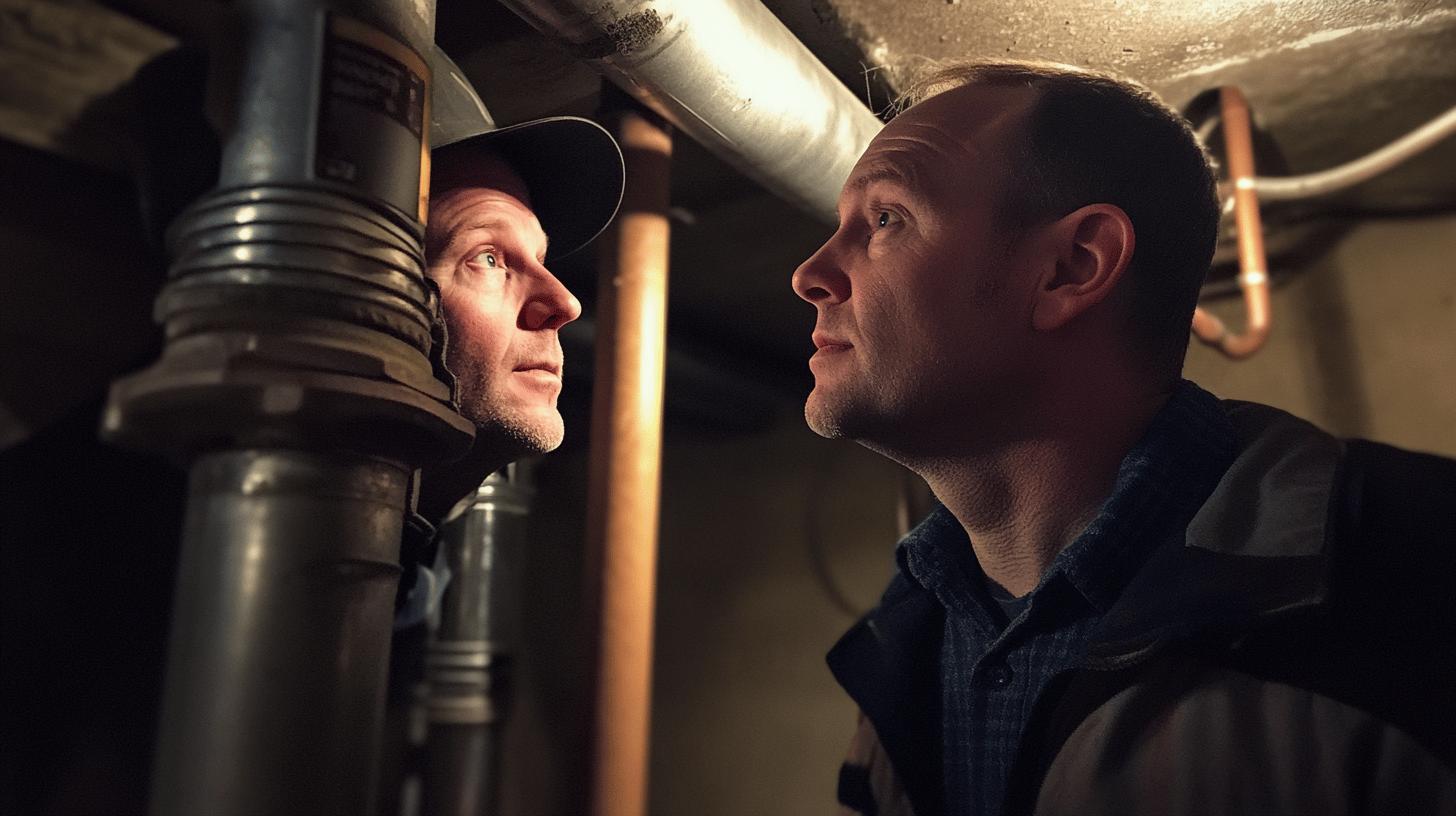TL;DR:
- Pipe Replacement: Replace galvanized, cast iron, clay, or lead pipes to prevent corrosion and contamination; use copper (strong, reliable), PVC (lightweight, cost-effective), PEX (flexible, leak-resistant), or CPVC (heat-resistant).
- Cost Example: Replacing polybutylene with PEX costs approximately $2,500.
- Toilets: Low-flow and dual-flush toilets significantly reduce water usage.
- Leak Detection: Smart systems provide real-time alerts, automatic shut-off, and remote monitoring; professional installation is recommended.
- Water Heating: Upgrade to tankless or hybrid systems for better efficiency and lower energy bills.
- Drainage: Use trenchless sewer repair for minimal disruption; options include pipe bursting and relining. Professional plumbers ensure effective installations.
Is your older home at risk because of outdated plumbing? Old plumbing can cause problems like water contamination and leaks, leading to expensive repairs. In this article, you’ll discover important plumbing upgrades that can boost safety and efficiency in older homes. We’ll look at options for replacing pipes, installing energy-efficient fixtures, using smart leak detection, and upgrading heating solutions. These changes can help you avoid plumbing issues and improve water quality. Let’s explore the best upgrades to keep your home’s plumbing system current and running smoothly.
Best Pipe Replacement Options for Older Homes
Updating pipes in older homes is crucial for better water quality and avoiding structural problems. Older materials like galvanized steel, cast iron, clay, or lead can corrode and break down over time, creating safety risks. For instance, lead pipes can contaminate your water, and galvanized pipes tend to rust.
Modern options like copper, PVC, and PEX are durable alternatives, each with its own advantages. Copper is strong and reliable, PVC is lightweight and resistant to chemicals, and PEX is flexible and easy to install. Upgrading to these materials not only enhances water quality but also helps prevent potential flooding and damage.
New pipe materials offer both aesthetic and practical benefits. Here’s a list of commonly used materials and their advantages:
- Copper: Long-lasting and bacteria-resistant.
- PVC: Cost-effective and simple to install.
- PEX: Flexible and leak-resistant, suitable for extreme temperatures.
- CPVC: Similar to PVC, but withstands higher temperatures for hot water lines.
While the benefits of upgrading pipes are obvious, replacement costs can vary depending on the materials and the size of your home. For instance, replacing polybutylene pipes with PEX could cost around $2,500. It’s also important to factor in labor costs and how accessible the old pipes are. Hiring professional plumbers ensures the job is done safely and efficiently, reducing future risks and extending the life of your plumbing system.
Energy-Efficient Plumbing Fixtures for Older Homes

Upgrading to energy-efficient plumbing fixtures in older homes is a smart move. It helps save water and lowers your utility bills. Modern fixtures, like low-flow faucets and efficient showerheads, use less water without sacrificing performance, making it easier to manage your water usage while promoting sustainability.
Toilet Upgrades
Modern bathrooms with low-flow and dual-flush toilets really help with water efficiency. Low-flow models use about 1.5 gallons per flush, while older toilets can use up to 5 gallons. This switch can save you a lot on your water bills over time. Dual-flush toilets are even better because they let you choose a low volume for liquids and a higher one for solids. Both options are efficient and eco-friendly, making them great upgrades for any older home.
Replacing outdated faucets and showerheads enhances efficiency and style too. Modern features include:
- Pull-Out Faucets: Handy for washing and rinsing, adding kitchen functionality.
- Touchless Faucets: Improve hygiene by minimizing contact.
- Aerated Flow Faucets: Conserve water by maintaining pressure.
Talking to professional plumbers is really important when picking new fixtures. They know how to install everything correctly and make sure it works well. They can also recommend the best products and deal with any issues that might come up, making the switch to a more efficient plumbing system a lot smoother.
Smart Leak Detection and Prevention Systems
Detecting leaks early in older homes is super important to prevent damage and expensive repairs. Smart leak detection systems provide a proactive way to keep an eye on your plumbing. They use advanced technology to monitor things and alert you to problems like unusual water flow or pressure changes. By catching leaks early, you can avoid serious water damage and the high costs that come with it.
| Feature | Benefit |
|———————–|———————————————–|
| Real-time Alerts | Immediate notifications prevent water damage |
| Automatic Shut-off | Stops water flow to minimize risk |
| Remote Monitoring | Access system status from anywhere |
Bringing in professionals for installing and maintaining smart leak detection systems is really important. They know how to make sure these devices fit well with your plumbing and work reliably. A proper installation reduces the chance of malfunctions and helps keep your home safe. Plus, regular maintenance makes sure the technology stays updated and any issues are dealt with, keeping your plumbing system secure.
Efficient Water Heating Solutions for Vintage Homes

Upgrading the water heating system in an older home can really improve energy efficiency and lower your bills. Newer water heaters deliver a steady supply of hot water while using less energy than older ones. Switching to an energy-efficient model not only cuts costs but also improves performance, making your home more sustainable and increasing its value.
Tankless Water Heaters
Tankless water heaters are a great choice for older homes because they work differently than traditional tanks. Instead of keeping a big tank of hot water ready, they heat water only when you need it. This saves energy and lowers your utility bills. Plus, since they don’t have to keep a reservoir of hot water, they don’t waste energy like regular heaters do. Their small size is also a big plus in vintage homes where space can be tight.
Hybrid systems are another option. They combine the old-school tank style with heat pump technology, which means they pull heat from the air to warm the water. This makes them super efficient and can really cut down on energy use.
- Energy Efficiency: Minimizes energy by using existing heat.
- Increased Capacity: Provides enough hot water for large homes.
- Cost Savings: Cuts energy bills via efficient operation.
Homeowners should talk to professional plumbers when picking out new water heaters. They can help you understand your current system and suggest the best options for your needs. Pros make sure everything is installed correctly, which improves performance and keeps you in line with local regulations. This way, you can smoothly transition to a more efficient water heating system that increases comfort and saves you money.
Modernizing Drainage Systems in Older Homes
Updating drainage systems in older homes is essential to prevent flooding, water backups, and plumbing problems. As houses age, their original drainage systems can become outdated, leading to damage and expensive repairs. Modern drainage solutions are more reliable and efficient, reducing the chances of blockages and leaks. By upgrading, homeowners can safeguard their property and enhance the overall plumbing performance.
Trenchless Sewer Repair
Trenchless sewer repair is a modern way to fix or replace sewer lines without having to dig up your yard. This method reduces disruption to your property and keeps your landscaping intact. It works by either sliding a new pipe into the old one or using a resin sleeve to create a new pipe inside the old one. This approach is quick and cost-effective, providing a long-term solution for sewer line problems.
- Pipe Bursting: Breaks old pipes while laying new ones, ideal for severely damaged lines.
- Pipe Relining: Installs a resin-coated liner inside existing pipes, preventing leaks.
- Advanced Filtration Systems: Removes sediments and contaminants, ensuring safer drainage.
Hiring professional plumbers is key when updating complex drainage systems. Their expertise ensures everything is installed correctly, which helps avoid problems down the line. They evaluate the specific needs of older homes and provide tailored solutions to improve plumbing performance and longevity. This professional support gives you peace of mind, knowing your plumbing is in expert hands.
Final Words
Upgrading plumbing systems in older homes can lead to major improvements in efficiency and safety. Replacing old pipes with modern materials like PEX, PVC, and copper boosts water quality and cuts down on corrosion. Switching to energy-efficient fixtures helps save water and lower utility bills, making a noticeable impact on household expenses. Smart leak detection systems provide extra protection by preventing costly water damage. Upgrading to modern water heaters, especially tankless models, enhances energy efficiency. Finally, updating drainage systems is essential for preventing flooding and improving overall plumbing performance. Embrace these upgrades for a more efficient and reliable plumbing system.
FAQ
Best Plumbing System Upgrades for Older Homes 2021
Q: What are the best plumbing system upgrades for older homes?
A: Upgrading older home plumbing includes replacing galvanized or lead pipes with copper, PVC, or PEX. These modern materials improve water quality and reduce corrosion and breakages.
Cost Considerations for Plumbing Replacement
Q: What is the cost to replace plumbing in an old house?
A: Replumbing an old house varies, but typically ranges from $2,500 for small projects to significantly more, depending on house size and plumbing choices.
Q: What is the cost to replace plumbing in an old house per square foot?
A: Replacing plumbing costs about $4.50 to $12 per square foot, depending on the complexity and materials used.
Modern Plumbing Materials
Q: What type of plumbing is used in older homes?
A: Older homes often feature galvanized, cast iron, lead, or clay pipes, which are prone to rusting and health risks.
Q: What is the newest type of plumbing?
A: Newer plumbing materials include PEX and PVC, which are durable, corrosion-resistant, and easier to install than traditional materials.
Replacement Considerations
Q: Should I replace pipes in an old house?
A: Replacing old pipes is crucial for safety and efficiency, especially if they are made from materials like lead or galvanized steel, which pose health risks.
Q: What is better than steel pipe for plumbing installation?
A: PEX or copper offer better alternatives to steel pipes, providing flexibility, longevity, and corrosion resistance, making them ideal for modern plumbing.

